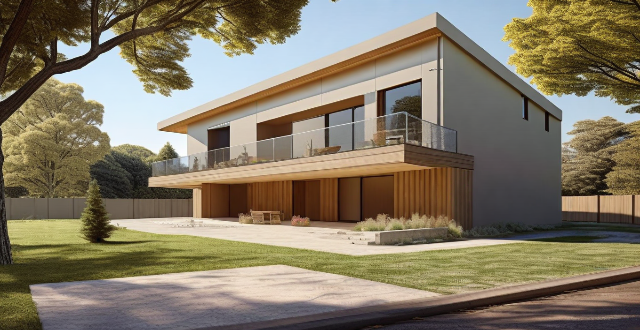Eco-friendly practices in construction projects offer economic benefits such as cost savings, increased property value, improved health and productivity, and risk mitigation. Incorporating energy-efficient designs and materials can reduce utility costs, while the use of durable materials can lower maintenance costs. Tax incentives and grants can offset initial costs, making sustainable practices more affordable. Eco-friendly buildings often have higher resale values and attract tenants and buyers who prioritize sustainability. A healthier indoor environment can reduce absenteeism and healthcare costs for businesses and improve quality of life for residents. Implementing eco-friendly practices can help builders stay compliant with evolving regulations and create resilient buildings that are less vulnerable to climate change impacts.

The Economic Benefits of Implementing Eco-Friendly Practices in Construction Projects
Implementing eco-friendly practices in construction projects not only benefits the environment but also provides numerous economic advantages. Here are some of the key economic benefits:
Cost Savings
Energy Efficiency
One of the most significant economic benefits of eco-friendly construction is energy efficiency. By incorporating energy-efficient designs and materials, builders can reduce energy consumption and utility costs for the building's occupants. This can result in long-term cost savings for both the owner and tenant.
Lower Maintenance Costs
Eco-friendly buildings often require less maintenance due to their use of durable, sustainable materials and efficient systems. This can lead to lower maintenance costs over the life of the building.
Tax Incentives and Grants
Many governments offer tax incentives and grants for eco-friendly construction projects. These financial incentives can help offset the initial costs of implementing sustainable practices and make them more affordable for builders and developers.
Increased Property Value
Higher Resale Value
Buildings that incorporate eco-friendly features often have higher resale values than traditional buildings. This is because they are seen as more desirable by potential buyers who are looking for energy-efficient, healthy, and sustainable homes and offices.
Attracting Tenants and Buyers
Eco-friendly buildings are increasingly attractive to tenants and buyers who prioritize sustainability and health. By implementing green practices, builders can attract a wider pool of potential renters or buyers, which can lead to increased occupancy rates and rental income.
Improved Health and Productivity
Healthier Indoor Environment
Eco-friendly buildings often incorporate features such as natural lighting, ventilation, and non-toxic materials that create a healthier indoor environment. This can lead to reduced absenteeism and healthcare costs for businesses and improved quality of life for residents.
Increased Productivity
Healthy indoor environments also contribute to increased productivity among employees. When workers feel comfortable and healthy in their surroundings, they are more likely to be engaged and productive at work.
Risk Mitigation
Compliance with Regulations
As regulations regarding environmental impact continue to evolve, implementing eco-friendly practices in construction projects can help builders stay ahead of the curve and avoid potential fines or legal issues related to non-compliance.
Resilience to Climate Change
Eco-friendly buildings are often designed to be more resilient to climate change impacts such as extreme weather events. This can help reduce the risk of damage or loss of property value due to climate-related issues.
In conclusion, implementing eco-friendly practices in construction projects offers numerous economic benefits, including cost savings, increased property value, improved health and productivity, and risk mitigation. By prioritizing sustainability in the built environment, we can create healthier, more resilient communities while also achieving long-term economic gains.